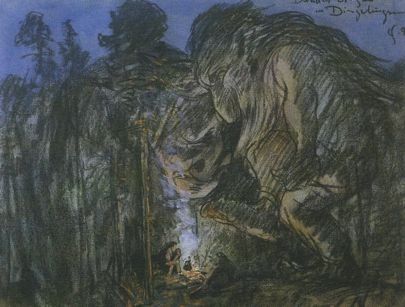Living With Shock and Awe
"On regular days the kids go out to play to take in the fresh air, but that's not really possible or safe under the current conditions."
"Personally, I can feel the contamination a little. Breathing is a little uncomfortable, and it's uncomfortable staying outside when the contamination comes in over our town."
Agusta Palsdottir, manager, Graenuvellir kindergarten, Husavik, north Iceland
"There's exactly nothing you can do, aside from going inside."
"People that are more sensitive than others need to avoid physical exertion outside and try to stay inside and warm up their houses to prevent the gas from getting inside."
Kristjan Thor Magnusson, mayor, Northurthing municipality
"Which town is affected depends only on weather and winds."
"There's still a chance that the eruption in Holuhraun will pose a risk to international air travel. "
"Although there's quite a bit of activity in the crater of Bardarbunga volcano, the activity does seem to be moving northeast, away from the ice cap."
"Wind and rain are the best thing to happen for Icelanders while the eruption continues. Iceland usually has plenty of that."
Bergthora S. Thorbjarnardottir, geophysicist, Icelandic Met Office

The eruption in Holuhraun. Photo: Geir Ólafsson.
Since November 7th, some 200 earthquakes have rocked the area surrounding the eruption site around the Holuhraun lava field near the Bardarbunga volcano in northern Iceland. The largest of those quakes measured about 5.2 magnitude and Iceland's Civil Protection Agency warned that gas pollution was expected in the western part of the country, as a result. When the volcano first began erupting in August it was thought that air traffic would be impacted as it had been in 2010.
At that time, the eruption of the Eyjafjallajokull volcano under its ice cap threw a column of ash fully nine kilometres into the sky, an event that led to the closure of airspace across Europe for a six-day period. Carriers responded by having to cancel over 100,000 flights since the spewing ash constitutes a danger as the particles, like glass in the air, is capable of damaging jet engines.
When the volcano began its tell-tale rumbling a fissure 300 metres long was the site of the eruption. An eruption right under the glacier covering the volcano could create an explosion spewing ash into the air at a dangerous level, but the fissures has been moving northeast, and away from the threatened ice. This eruption, while not the largest, is comparable to the 1783 Lakagigar blowout which covered 600 square kilometres in Lava, the event seven to eight months in duration.

Haze from the pollution over Reykjavík on October 8. Photo: Zoë Robert.
At the present time with the current three-month-long eruption sulphur-dioxide gas is spewing from the lave field near the volcano with no signals that it will soon come to an end. 70 square kilometres have so far been covered with red-hot lava. Icelanders wait and hope. as they monitor the gas clouds drifting across the island, produced by the volcanic activity. Icelanders are not observing a new phenomena.
They have learned to live with their island covered with volcanoes, and to harness their power. The late 1700s eruption is known to have been the cause of a famine that killed 25 percent of the population, descendants of Viking settlers. The government issues warnings on health risks, that exposure to sulphur dioxide can cause eye, throat and lung irritation, while high-levels can lead to breathing difficulties, with children the most vulnerable.

Photo: Institute of Earth Sciences. Lava Flow
Iceland is the mysterious land of strange creatures living in peculiar rock formations. Not only is the geology of the country amazing to behold, but the creatures living within that geology are held in great respect by Icelanders, from the elves and the hidden people to the trolls that inhabit the hidden mysteries of the island. They are held in great respect and reverence, for it would never do to give grave insult to the creatures of Iceland. One can never know what the consequences may be. It is not impossible that the volcano now spewing its poison gas and lava has taken umbrage on behalf of its elves having reported a slight, however inadvertent.
Iceland is the mysterious land of strange creatures living in peculiar rock formations. Not only is the geology of the country amazing to behold, but the creatures living within that geology are held in great respect by Icelanders, from the elves and the hidden people to the trolls that inhabit the hidden mysteries of the island. They are held in great respect and reverence, for it would never do to give grave insult to the creatures of Iceland. One can never know what the consequences may be. It is not impossible that the volcano now spewing its poison gas and lava has taken umbrage on behalf of its elves having reported a slight, however inadvertent.
 |
| Icelandic Trolls |

0 Comments:
Post a Comment
<< Home